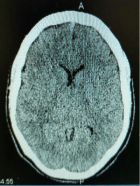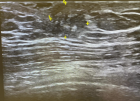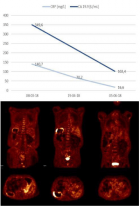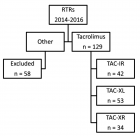Abstract
Review Article
A Gateway to Metal Resistance: Bacterial Response to Heavy Metal Toxicity in the Biological Environment
Loai Aljerf* and Nuha AlMasri
Published: 03 September, 2018 | Volume 2 - Issue 1 | Pages: 032-044
Heavy metals and metalloids are dangerous because they have the tendency to bioaccumulate in biological organisms over a period of time. However, it is conceived that a number of phytochemical agents as well microorganism can act as heavy metal removing agent both from human beings and the environment surrounding. For instance, microbes are used for the removal of heavy metals from the water bodies including bacteria, fungi, algae and yeast. This review shows that bacteria can play an important role in understanding the uptake and potential removal behaviour of heavy metal ions. The bacteria are chosen based on their resistance to heavy metals (incl. their toxicities) and capacity of adsorbing them. Due to specific resistance transfer factors, cell impermeability is drastically inhibited by several ion (i.e. mercury, cadmium, cobalt, copper, arsenic) forms. Between these elements, free-ion cadmium and copper concentrations in the biological medium provide more accurate determination of metal concentrations that affect the bacteria, than with most of the other existing media. Metal toxicity is usually assessed by using appropriate metal ion chelators and adjusting pH factor. Bacteria and metals in the ecosystem can form synergistic or antagonistic relationships, supplying each other with nutrients or energy sources, or producing toxins to reduce growth and competition for limiting nutritional elements. Thus, this relation may present a more sustainable approach for the restoration of contaminated sources.
Read Full Article HTML DOI: 10.29328/journal.aac.1001012 Cite this Article Read Full Article PDF
Keywords:
Heavy metal; Phytochemical agents; Microorganism; Environment; Impermeability; Resistance transfer factors; Chelators
References
- Jung H. Nutrients and heavy metals contamination in an urban estuary of northern New Jersey. Geosciences. 2017; 7: 108. Ref.: https://tinyurl.com/ycnj3936
- Aljerf L, Choukaife AE. Review: Assessment of the doable utilisation of dendrochronology as an element tracer technology in soils artificially contaminated with heavy metals. Biodiversity International Journal. 2018; 2: 1-8. Ref.: https://tinyurl.com/yc3hkbnl
- Mustafa G, Komatsu S. Toxicity of heavy metals and metal-containing nanoparticles on plants. Biochim Biophys Acta. 2016; 1864: 932-944. Ref.: https://tinyurl.com/y8zo7dbq
- Aljerf L, Al Masri N. Mercury toxicity: ecological features of organic phase of mercury in biota-Part I. Archives of Organic and Inorganic Chemical Sciences. 2018; 3: 1-8. Ref.: https://tinyurl.com/yazn237c
- Jadoon S, Malik A. DNA damage by heavy metals in animals and human beings: an overview. Biochem Pharmacol. 2017; 6: 1-8. Ref.: https://tinyurl.com/yartpqd9
- Warburg O. Heavy metal prosthetic groups and enzyme action. Soil Sci. 1950; 70: 166. Ref.: https://tinyurl.com/ybqu4znr
- Lalotra P. Bioaccumulation of heavy metals in the sporocarps of some wild mushrooms. Curr Res Environ Appl Mycol J Fungal Biol. 2016; 6: 159-165. Ref.: https://tinyurl.com/y7733ojc
- Aljerf L. Advanced highly polluted rainwater treatment process. Journal of Urban and Environmental Engineering. 2018.
- Stasinos S, Nasopoulou C, Tsikrika C, Zabetakis I. The bioaccumulation and physiological effects of heavy metals in carrots, onions, and potatoes and dietary implications for Cr and Ni: A review. J Food Sci. 2014; 79: 765-780. Ref.: https://tinyurl.com/ya4cegqp
- Shah SA. Trace minerals and heavy metals: implications in prostate cancer. Bangl J Med 2017; 8: 27. Ref.: https://tinyurl.com/ybtxln4j
- Bjørklund G, Mutter J, Aaseth J. Metal chelators and neurotoxicity: lead, mercury, and arsenic. Arch Toxicol. 2017; 91: 3787-3797. Ref.: https://tinyurl.com/y9dlr5u2
- Feingold A. The elimination of volatile substances from the lungs. Int Anesthesiol Clin. 1977; 15: 153-168. Ref.: https://tinyurl.com/ydhge79v
- Sato Y. The pathological findings of placenta with neonatal placenta. Placenta. 2017; 59: 169. Ref.: https://tinyurl.com/yc7oneo3
- De J, Ramaiah N, Vardanyan L. Detoxification of toxic heavy metals by marine bacteria highly resistant to mercury. Mar Biotechnol. 2008; 10: 471-477. Ref.: https://tinyurl.com/y77bkov7
- Robinson T. Removal of toxic metals during biological treatment of landfill leachates. Waste Manage. 2017; 63: 299-309. Ref.: https://tinyurl.com/ybcsnoy8
- Aljerf L. High-efficiency extraction of bromocresol purple dye and heavy metals as chromium from industrial effluent by adsorption onto a modified surface of zeolite: kinetics and equilibrium study. Journal of Environmental Management. 2018. Ref.: https://tinyurl.com/y7zos28k
- Soltani N, Shaheli M. Cow milk contamination with heavy metals (mercury and lead) and the possibility of heavy metals disintegration by the human intestinal bacteria. J Med Microbiol Diag. 2017; 6: 267. Ref.: https://tinyurl.com/yazt4xew
- Mathew R, College SM, Krishnaswamy VG. Remediation of mixed heavy metals using acido-tolerant bacterial co-cultures. Int J Agric Environ Sci. 2017; 4: 43-52. Ref.: https://tinyurl.com/ybjyax2w
- Waturangi DE, Rahayu BS, Lalu KY, Mulyono N. Characterization of bioactive compound from actinomycetes for antibiofilm activity against Gram-negative and Gram-positive bacteria. Malays J Microbiol. 2016; 12: 291-299. Ref.: https://tinyurl.com/y954g78q
- Puyen ZM, Villagrasa E, Maldonado J, Diestra E, Esteve I, et al. Biosorption of lead and copper by heavy-metal tolerant Micrococcus luteus DE2008. Bioresour Technol. 2012; 126: 233-237. Ref.: https://tinyurl.com/ycsqrvno
- Barrow W, Himmel M, Squire PG, Tornabene TG. Evidence for alteration of the membrane-bound ribosomes in Micrococcus luteus cells exposed to lead. Chem Biol Interact. 1978; 23: 387-397. Ref.: https://tinyurl.com/y9vj62hn
- Bishop R. Bacterial lipids. Biochim Biophys Acta. 2016; 1862: 1285-1286. Ref.: https://tinyurl.com/ydhs6r97
- Gautam S, Sood NK, Gupta K. Aberrant cytoplasmic accumulation of retinoblastoma protein in basal cells may lead to increased survival in malignant canine mammary tumours. Vet Med. 2018; 59: 76-80. Ref.: https://tinyurl.com/ybgurms5
- Owen P, Salton MRJ. Isolation and characterization of a mannan from mesosomal membrane vesicles of Micrococcus lysodeikticus. Biochim Biophys Acta 1975; 406: 214-234. Ref.: https://tinyurl.com/yb3aucpg
- Saxena G, Flora SJS. Lead-induced oxidative stress and hematological alterations and their response to combined administration of calcium disodium EDTA with a thiol chelator in rats. J Biochem Mol Toxicol. 2004; 18: 221-233. Ref.: https://tinyurl.com/ydx8su6m
- Nielsen AM, Sojka GA. Photoheterotrophic utilization of acetate by the wild type and an acetate-adapted mutant of Rhodopseudomonas capsulata. Arch Microbiol. 1979; 120: 39-42. Ref.: https://tinyurl.com/yd2d5j4j
- Jaiganesh T, Rani JDV, Girigoswami A. Spectroscopically characterized cadmium sulfide quantum dots lengthening the lag phase of Escherichia coli growth. Spectrochim Acta A. 2012; 92: 29-32. Ref.: https://tinyurl.com/y7xsknvu
- Parran DK. Effects of methylmercury and mercuric Chloride on differentiation and cell viability in PC12 cells. Toxicol Sci. 2001; 59: 278-290. Ref.: https://tinyurl.com/y82hp9a4
- Kato F, Tanaka M, Nakamura K. Rapid fluorometric assay for cell viability and cell growth using nucleic acid staining and cell lysis agents. Toxicol In Vitro. 1999; 13: 923-929. Ref.: https://tinyurl.com/ycdm4erf
- Mokkapati SK, de Henestrosa ARF, Bhagwat AS. Escherichia coli DNA glycosylase Mug: a growth-regulated enzyme required for mutation avoidance in stationary-phase cells. Mol Microbiol. 2008; 41: 1101-1111. Ref.: https://tinyurl.com/yaadvf7l
- Cheng TC. In vivo effects of heavy metals on cellular defense mechanisms of Crassostrea virginica: Total and differential cell counts. J Invertebr Pathol. 1988; 51: 207-214. Ref.: https://tinyurl.com/y8cm89mq
- Singleton FL, Guthrie RK. Aquatic bacterial populations and heavy metals-I. Composition of aquatic bacteria in the presence of copper and mercury salts. Water Res. 1977; 11: 639-642. Ref.: https://tinyurl.com/y7k45ttd
- Bradberry SM. Metals (cobalt, copper, lead, mercury). Medicine. 2016; 44: 182-184. Ref.: https://tinyurl.com/ybfj8flz
- Albright LJ, Wilson EM. Sub-lethal effects of several metallic salts-organic compounds combinations upon the heterotrophic microflora of a natural water. Water Res. 1974; 8: 101-105. Ref.: https://tinyurl.com/y94cbuds
- Anderson DM, Lively JS, Vaccaro RF. Copper complexation during spring phytoplankton blooms in coastal waters. Mar Res. 1984; 42: 677-695. Ref.: https://tinyurl.com/y7lmq5wq
- Couillard D, Chartier M, Mercier G. Bacterial leaching of heavy metals from aerobic sludge. Bioresour Technol. 1991; 36: 293-302. Ref.: https://tinyurl.com/y8a9tcfo
- Kobayashi N, Okamura H. Effects of heavy metals on sea urchin embryo development-Part 2 Interactive toxic effects of heavy metals in synthetic mine effluents. Chemosphere. 2005; 61: 1198-1203. Ref.: https://tinyurl.com/y92xphnv
- Ipeaiyeda AR, Onianwa PC. Sediment quality assessment and dispersion pattern of toxic metals from brewery effluent discharged into the Olosun river, Nigeria. Environ Earth Sci. 2016; 75: 325. Ref.: https://tinyurl.com/yb9ty5kw
- Aquino SF, Stuckey DC. Bioavailability and toxicity of metal nutrients during anaerobic digestion. Environ Eng. 2007; 133: 28-35. Ref.: https://tinyurl.com/ydbtwz6u
- Shi Y, Qi X, Gao Q. Removal of heavy metals by bacteria in bio-ceramsite and their toxicity to bacteria. Asian J Chem. 2015; 27: 2463-2467. Ref.: https://tinyurl.com/y7opseds
- Mendiguchía C, Moreno C, García-Vargas M. Separation of heavy metals in seawater by liquid membranes: preconcentration of copper. Sep Sci Technol. 2002; 37: 2337-2351. Ref.: https://tinyurl.com/y95hpbgo
- Ornaghi F, Ferrini S, Prati M, Giavini E. The protective effects of N-acetyl-L-cysteine against methyl mercury embryo toxicity in Mice. Toxicol Sci. 1993; 20: 437-445. Ref.: https://tinyurl.com/y9f8fryx
- Sato C, Leung SW, Schnoor JL. Toxic response of Nitrosomonas europaea to copper in inorganic medium and wastewater. Water Res. 1988; 22: 1117-1127. Ref.: https://tinyurl.com/y8mrco68
- McIver CJ, Tapsall JW. Cysteine requirements of naturally occurring cysteine auxotrophs of Escherichia coli. Pathology. 1987; 19: 361-363. Ref.: https://tinyurl.com/y8ryl9oh
- Sprague JB. Promising anti-pollutant: chelating agent NTA protects fish from copper and zinc. Nature. 1968; 220: 1345-1346. Ref.: https://tinyurl.com/yc998qxb
- Shaikh ZA, Blazka ME, Endo T. Metal transport in cells: cadmium uptake by rat hepatocytes and renal cortical epithelial cells. Environ Health Perspect. 1995; 103: 73-75. Ref.: https://tinyurl.com/y8o5fwqt
- Puls RW, Bohn HL. Sorption of cadmium, nickel, and zinc by kaolinite and montmorillonite suspensions1. Soil Sci Soc Am J. 1988; 52: 1289. Ref.: https://tinyurl.com/y9lqz7py
- Hall PL. Adsorption of water by homoionic exchange forms of Wyoming montmorillonite (SWy-1). Clays Clay Miner. 1989; 37: 355-363. Ref.: https://tinyurl.com/ycfxn6wj
- Leitao JH, Sa-Correia I. Effects of growth-inhibitory concentrations of copper on alginate biosynthesis in highly mucoid Pseudomonas aeruginosa. Microbiology. 1997; 143: 481-488. Ref.: https://tinyurl.com/ybhup42z
- Masuda G, Tomioka S, Uchida H, Hasegawa M. Bacteriostatic and bactericidal activities of selected Beta-Lactam antibiotics studied on agar plates. Antimicrob Agents Chemother. 1977; 11: 376-382. Ref.: https://tinyurl.com/yb6uqfvk
- Panda J, Sarkar P. Bioremediation of chromium by novel strains Enterobacter aerogenes T2 and Acinetobacter sp PD 12 S2. Environ Sci Pollut Res. 2011; 19: 1809-1817. Ref.: https://tinyurl.com/y996ak4h
- Sundar K, Sadiq M, Mukherjee A, Chandrasekaran N. Bioremoval of trivalent chromium using Bacillus biofilms through continuous flow reactor. Hazard Mater. 2011; 196: 44-51. Ref.: https://tinyurl.com/y7nu5yub
- Bhaskar RK. Pollutants induced cancer in experimental animals. Int J Sci Res. 2016; 5: 2221-2225. Ref.: https://tinyurl.com/ya7no6lg
- Cenci C, Morozzi G. Evaluation of the toxic effect of Cd2+ and Cd(CN)42− ions on the growth of mixed microbial population of activated sludges. Sci Total Environ. 1977; 7: 131-143. Ref.: https://tinyurl.com/y8xztqyp
- Ji G, Silver S. Reduction of arsenate to arsenite by the ArsC protein of the arsenic resistance operon of Staphylococcus aureus plasmid pI258. Proc Natl Acad Sci. 1992; 89: 9474-9478. Ref.: https://tinyurl.com/y73cdwkk
- Babai R. An Escherichia coli gene responsive to heavy metals. FEMS Microbiol Lett. 1998; 167: 107-111. Ref.: https://tinyurl.com/y7wgac4q
- Tempest DW, Hunter JR, Sykes J. Magnesium-limited growth of Aerobacter aerogenes in a chemostat. J Gen Microbiol. 1965; 39: 355-366. Ref.: https://tinyurl.com/y9ee43vx
- Tsai KP. Management of target algae by using copper-based algaecides: effects of algal cell density and sensitivity to copper. Water Air Soil Pollut. 2016; 227: 238. Ref.: https://tinyurl.com/yaz5pwf2
- Al-Masoudi WA, Faaz RA, Al-Asadi RH, Jabbar HS. Synthesis, antimicrobial activity and modelling studies of some new metal complexes of Schiff base derived from sulphonamide drug in vitro. Eur J Chem. 2016; 7: 102-106. Ref.: https://tinyurl.com/y7yewfx6
- Smit H, van der Goot H, Nauta WT, Timmerman H, de Bolster MW, et al. Mode of action of the copper(I) complex of 2,9-dimethyl-1,10-phenanthroline on Mycoplasma gallisepticum. Antimicrob Agents Chemother. 1981; 20: 455-462. Ref.: https://tinyurl.com/ycszynn2
- Harris CM, Patil HRH, Sinn E. Nitrogenous chelate complexes of transition metals. IV Pseudo-tetrahedral copper (II) complexes containing 2,2'-biquinolyl. Inorg Chem. 1967; 6: 1102-1105. Ref.: https://tinyurl.com/y7jvruh8
- Milacic V, Jiao P, Zhang B, Dou QP. Novel 8-hydroxylquinoline analogs induce copper-dependent proteasome inhibition and cell death in human breast cancer cells. Int J Oncol. 2009; 35: 1481-1491. Ref.: https://tinyurl.com/yd4nt7wv
- Naka K, Ando D, Chujo Y. Effect of substituent groups for formation of organic-metal hybrid nanowires by charge-transfer of tetrathiafulvalene derivatives with metal ion. Synth Met. 2009; 159: 931-934. Ref.: https://tinyurl.com/yah5oera
- Dipu S, Kumar AA, Thanga SG. Effect of chelating agents in phytoremediation of heavy metals. Remed J. 2012; 22: 133-146. Ref.: https://tinyurl.com/y76gajop
- Madoni P, Esteban G, Gorbi G. Acute toxicity of cadmium, copper, mercury, and zinc to ciliates from activated sludge plants. Bull Environ Contam Toxicol. 1992; 49: 900-905. Ref.: https://tinyurl.com/yd9fkowq
- Morgan-Sagastume F, Nielsen JL, Nielsen PH. Substrate-dependent denitrification of abundant probe-defined denitrifying bacteria in activated sludge. FEMS Microbiol Ecol. 2008; 66: 447-461. Ref.: https://tinyurl.com/yau2yrhk
- Gu Z, Aikebaier Y, Arefieva V, Mazirov M. Using microbiological leaching method to remove heavy metals from sludge. Eurasian J Soil Sci. 2017; 6: 51-51. Ref.: https://tinyurl.com/y8ptc6j8
- Abdulaziz A, Jasmin C, Sheeba VA, Gireeshkumar TR, Shanta N. Heavy metals pollution influence the community structure of Cyanobacteria in nutrient rich tropical estuary. Oceanogr. 2017; 3: 137. Ref.: https://tinyurl.com/yajlpdg3
- Chen J, Weimer PJ. Competition among three predominant ruminal cellulolytic bacteria in the absence or presence of non-cellulolytic bacteria. Microbiol. 2001; 147: 21-30. Ref.: https://tinyurl.com/ycqrydhb
- Vardy DW, Doering JA, Santore R, Ryan D, Giesy JP, et al. Assessment of Columbia river sediment toxicity to White Sturgeon: concentrations of metals in sediment, pore water and overlying water. J Environ Anal Toxicol. 2014; 5: 263. Ref.: https://tinyurl.com/ybnde9x5
- Meger SA. Polluted precipitation and the geochronology of mercury deposition in lake sediment of northern Minnesota. Water Air Soil Pollut. 1986; 30: 411-419. Ref.: https://tinyurl.com/yab68f4l
- Sarkar T, Hussain A. Photocytotoxicity of curcumin and its iron complex. Enzyme Eng. 2016; 5: 143. Ref.: https://tinyurl.com/ya3nzon6
- Ottow JCG. Evaluation of iron-reducing bacteria in soil and the physiological mechanism of iron-reduction in Aerobacter aerogenes. Z Allg Mikrobiol. 2007; 8: 441-443. Ref.: https://tinyurl.com/y8l8hxot
- Grass G. Iron Transport in Escherichia Coli: All has not been said and Done. Biometals. 2006; 19: 159-172. Ref.: https://tinyurl.com/y978dbfc
- Atieh MA, Ji Y, Kochkodan V. Metals in the environment: toxic metals removal. Bioinorg Chem Appl. 2017; 2017: 1-2. Ref.: https://tinyurl.com/ycx8ftlm
- Pongratz R, Heumann KG. Production of methylated mercury, lead, and cadmium by marine bacteria as a significant natural source for atmospheric heavy metals in polar regions. Chemosphere. 1999; 39: 89-102. Ref.: https://tinyurl.com/y7kpgjrp
- Maher WA. Determination of inorganic and methylated arsenic species in marine organisms and sediments. Anal Chim Acta. 1981; 126: 157-165. Ref.: https://tinyurl.com/y98qtw6t
- Farmer JG. Lead concentration profiles in lead-210 dated Lake Ontario sediment cores. Sci Total Environ. 1978; 10: 117-127. Ref.: https://tinyurl.com/yct52zds
- Kobza J. Soil and plant pollution by potentially toxic elements in Slovakia. Plant Soil Environ. 2018; 51: 243-248. Ref.: https://tinyurl.com/yb7lqkly
- Clarkson TW, Stockinger H. Recent advances in the toxicology of mercury with emphasis on the alkylmercurials. Crit Rev Toxicol. 1972; 1: 203-234. Ref.: https://tinyurl.com/ya4mbb6b
- Lambertsson L, Nilsson M. Organic material: the primary control on mercury methylation and ambient methyl mercury concentrations in estuarine sediments. Environ Sci Technol. 2006; 40: 1822-1829. Ref.: https://tinyurl.com/ybus2bxp
- Baralkiewicz D, Gramowska H, Gołdyn R. Distribution of total mercury and methyl mercury in water, sediment and fish from Swarze dzkie lake. Chem Ecol. 2006; 22: 59-64. Ref.: https://tinyurl.com/y8xhp5rp
- Wright DR, Hamilton RD. Release of methyl mercury from sediments: effects of mercury concentration, low temperature, and nutrient addition. Can J Fish Aquat Sci. 1982; 39: 1459-1466. Ref.: https://tinyurl.com/yd9ugadg
- Oswald CJ, Carey SK. Total and methyl mercury concentrations in sediment and water of a constructed wetland in the Athabasca Oil Sands Region. Environ Pollut. 2016; 213: 628-637. Ref.: https://tinyurl.com/ycfsq9wh
- Furukawa K, Tonomura K. Induction of metallic mercury-releasing enzyme in mercury-resistant pseudomonas. Agric Biol Chem. 1972; 36: 2441-2448. Ref.: https://tinyurl.com/y8puseek
- Furukawa K, Tonomura K. Enzyme system involved in the decomposition of phenyl mercuric acetate by mercury-resistant pseudomonas. Agric Biol Chem. 1971; 35: 604-610. Ref.: https://tinyurl.com/y7z2uaau
- Matsumura F, Gotoh Y, Boush GM. Phenylmercuric acetate: metabolic conversion by microorganisms. Science. 1971; 173: 49-51. Ref.: https://tinyurl.com/yamjhjkw
- Graham AM, Bullock AL, Maizel AC, Elias DA, Gilmour CC. Detailed assessment of the kinetics of Hg-cell association, Hg methylation, and methylmercury degradation in several Desulfovibrio species. Appl Environ Microbiol. 2012; 78: 7337-7346. Ref.: https://tinyurl.com/y9f52eeg
- Alekhin YV, Zagrtdenov NR, Mukhamadiyarova RV. Hg0(liq)-Hg0(solution) equilibrium and solubility of elementary mercury in water. Moscow Univ Geol Bull. 2011; 66: 439-441. Ref.: https://tinyurl.com/y8725ndh
- Krul J. Some factors affecting floc formation by Zoogloea ramigera, strain I-16-M. Water Res. 1977; 11: 51-56. Ref.: https://tinyurl.com/yctttc7l
- Bitton G, Freihofer V. Influence of extracellular polysaccharides on the toxicity of copper and cadmium toward Klebsiella aerogenes. Microb Ecol. 1977; 4: 119-125. Ref.: https://tinyurl.com/ycts6oog
- Brandt KK, Petersen A, Holm PE, Nybroe O. Decreased abundance and diversity of culturable Pseudomonas spp. populations with increasing copper exposure in the sugar beet rhizosphere. FEMS Microb Ecol. 2006; 56: 281-291. Ref.: https://tinyurl.com/ydx6oxn9
- Tornabene TG, Edwards HW. Microbial uptake of lead. Science. 1972; 176: 1334-1335. Ref.: https://tinyurl.com/y9v7m2hj
- Kim SJ. Research papers: Estimation of active nitrosomonas and nitrobacter concentrations in activated sludge using nitrogenous oxygen uptake rate. Environ Eng Res. 2004; 9: 130-142. Ref.: https://tinyurl.com/ycc43336
- Yu R, Lai B, Vogt S, Chandran K. Elemental profiling of single bacterial cells as a function of copper exposure and growth phase. PLoS ONE. 2011; 6: e21255. Ref.: https://tinyurl.com/y856j8r2
- Microbialleachingof metals frommunicipal sludge: Effects of sludge solids concentration. Process Biochem. 1992; 27: 89-96. Ref.: https://tinyurl.com/ydf6lgkg
- Komura I, Funaba T, Izaki K. Mechanism of mercuric chloride resistance in microorganisms: II. NADPH-dependent reduction of mercuric chloride and vaporization of mercury from mercuric chloride by a multiple drug resistant strain of Escherichia coli. J Biochem. 1971; 70: 895-901. Ref.: https://tinyurl.com/y92wdb8x
- Rochelle PA, Fry JC, Day MJ. Factors affecting conjugal transfer of plasmids encoding mercury resistance from pure cultures and mixed natural suspensions of Epilithic Bacteria. Microbiol. 1989; 135: 409-424. Ref.: https://tinyurl.com/y9dgtbvu
- Guha C, Mookerjee A. RNA synthesis and degradation during preferential inhibition of protein synthesis by cobalt chloride in Escherichia coli K-12. Mol Biol Rep. 1981; 7: 217-220. Ref.: https://tinyurl.com/y9g5sjge
- Gotz F, Zabielski J, Philipson L, Lindberg M. DNA homology between the arsenate resistance plasmid pSX267 from Staphylococcus xylosus and the penicillinase plasmid pI258 from Staphylococcus aureus. Plasmid. 1983; 9: 126-137. Ref.: https://tinyurl.com/ybbt4uf7
- Diels L, Sadouk A, Mergeay M. Large plasmids governing multiple resistances to heavy metals: A genetic approach. Toxicol Environ Chem.1989; 23: 79-89. Ref.: https://tinyurl.com/yaqcrmoz
- Berger NA, Kociolek K, Pitha J. Steric factors in lymphocyte stimulation by organomercurials. Biochem Biophys Res Commun. 1979; 86: 1234-1240. Ref.: https://tinyurl.com/y76h4nuk
- Schwager S, Lumjiaktase P, Stöckli M, Weisskopf L, Eberl L. The genetic basis of cadmium resistance of Burkholderia cenocepacia. Environ Microbiol Rep. 2012; 4: 562-568. Ref.: https://tinyurl.com/yacvdrzs
- Gillis P. Investigating a potential mechanism of Cd resistance in Chironomus riparius larvae using kinetic analysis of calcium and cadmium uptake. Aquat. Toxicol. 2008; 89: 180-187. Ref.: https://tinyurl.com/y8xwjr5g
- Fujiwara K, Iwamoto M, Toda S, Fuwa K. Characteristics of Escherichia coli B resistant to cobaltous ion. Agric Biol Chem. 1977; 41: 313-322. Ref.: https://tinyurl.com/yanhrmjl
- Grabow WOK, van Zyl M, Prozesky OW. Behaviour in conventional sewage purification processes of coliform bacteria with transferable or non-transferable drug-resistance. Water Res. 1976; 10: 717-723. Ref.: https://tinyurl.com/y7anmj4m
- Varma MM, Thomas WA, Prasad C. Resistance to inorganic salts and antibiotics among sewage-borne enterobacteriaceae and achromobacteriaceae. J Appl Bacteriol. 1976; 41: 347-349. Ref.: https://tinyurl.com/y8hvo6f6
- Sinegani AAS, Younessi N. Antibiotic resistance of bacteria isolated from heavy metal-polluted soils with different land uses. J Glob Antimicrob Resist. 2017; 10: 247-255. Ref.: https://tinyurl.com/y8xsd7g3
- Nakahara H, Ishikawa T, Sarai Y, Kondo I, Kozukue H, et al. Mercury resistance and R Plasmids in Escherichia coli isolated from clinical lesions in Japan. Antimicrob Agents Chemother. 1977; 11: 999-1003. Ref.: https://tinyurl.com/ycaok7w2
- Baquero F. Low-level antibacterial resistance: a gateway to clinical resistance. Drug Resist Update. 2001; 4: 93-105. Ref.: https://tinyurl.com/ybg4xhwr
- Yamina B, Tahar B, Laure FM. Isolation and screening of heavy metal resistant bacteria from wastewater: a study of heavy metal co-resistance and antibiotics resistance. Water Sci Technol. 2012; 66: 2041. Ref.: https://tinyurl.com/y86gs5ok
- Wales A, Davies R. Co-selection of resistance to antibiotics, biocides and heavy metals, and its relevance to food borne pathogens. Antibiotics. 2015; 4: 567-604. Ref.: https://tinyurl.com/ya7kogdh
- Altug G, Balkis N. Levels of some toxic elements and frequency of bacterial heavy metal resistance in sediment and sea water. Environ Monit Assess. 2008; 149: 61-69. Ref.: https://tinyurl.com/y86tm8gz
- Guo T, Baasner J. Technical Note: Using FIMS to determine mercury content in sewage sludge, sediment and soil samples. J Autom Chem. 1996; 18: 221-223. Ref.: https://tinyurl.com/yanwhpfh
- Hart M. Diversity amongst Bacillus merA genes amplified from mercury resistant isolates and directly from mercury polluted soil. FEMS Microbiol Ecol. 1998; 27: 73-84. Ref.: https://tinyurl.com/ycu33hfr
- Søgaard Resistance types in citrobacter freund II occurrence and resistance to ampicillin, carbenicillin, cephalothin and mecillinam. Transfer of ampicillin resistance. Acta Pathol Microbiol Scand B. 2009; 27: 79-83. Ref.: https://tinyurl.com/y7t5cfjk
Similar Articles
-
Agricultural Residues for Future Energy Option in Sudan: An AnalysisAbdeen Mustafa Omer*. Agricultural Residues for Future Energy Option in Sudan: An Analysis. . 2018 doi: 10.29328/journal.aac.1001011; 2: 017-031
-
A Gateway to Metal Resistance: Bacterial Response to Heavy Metal Toxicity in the Biological EnvironmentLoai Aljerf*,Nuha AlMasri. A Gateway to Metal Resistance: Bacterial Response to Heavy Metal Toxicity in the Biological Environment. . 2018 doi: 10.29328/journal.aac.1001012; 2: 032-044
-
Chromium Isotopes Detection in their Ores with Minimal ErrorsLoai Aljerf*,Nuha AlMasri. Chromium Isotopes Detection in their Ores with Minimal Errors. . 2018 doi: 10.29328/journal.aac.1001013; 2: 045-054
-
Micropollutants in wastewater irrigation systems: Impacts and perspectivesJimena Lázaro Gil*. Micropollutants in wastewater irrigation systems: Impacts and perspectives. . 2019 doi: 10.29328/journal.aac.1001019; 3: 011-013
-
Treatment of antibiotic-resistant bacteria by nanoparticles: Current approaches and prospectsTigabu Bekele*,Getachew Alamnie. Treatment of antibiotic-resistant bacteria by nanoparticles: Current approaches and prospects. . 2022 doi: 10.29328/journal.aac.1001025; 6: 001-009
-
High-Performance Liquid Chromatography (HPLC): A reviewAbdu Hussen Ali*. High-Performance Liquid Chromatography (HPLC): A review. . 2022 doi: 10.29328/journal.aac.1001026; 6: 010-020
-
High-Performance Liquid Chromatography (HPLC): A reviewAbdu Hussen Ali*. High-Performance Liquid Chromatography (HPLC): A review. . 2022 doi: 10.29328/journal.aac.1001026; 6: 010-020
-
Optimization of the fermentation process, characterization and antioxidant activity of exopolysaccharides produced from Azotobacter As101Paiziliya Paerhati,Ning Hui Xia,Niu Li Tao,Gao Yan Hua,Lu Chun Fang,Abulimiti Yili*. Optimization of the fermentation process, characterization and antioxidant activity of exopolysaccharides produced from Azotobacter As101. . 2022 doi: 10.29328/journal.aac.1001036; 6: 082-088
-
Eco-friendly microplastic removal through physical and chemical techniques: a reviewMohammad R Alrbaihat*,Qusay Abu-Afifeh. Eco-friendly microplastic removal through physical and chemical techniques: a review. . 2023 doi: 10.29328/journal.aac.1001038; 7: 014-024
-
Buffer Solutions of known Ionic StrengthVíctor Cerdà*, Piyawan Phansi. Buffer Solutions of known Ionic Strength. . 2023 doi: 10.29328/journal.aac.1001043; 7: 051-056
Recently Viewed
-
Maternal and perinatal outcomes of uterine rupture in Lubumbashi, Democratic Republic of CongoJacques Ngoy Kitenge,Olivier Mukuku*,Xavier K Kinenkinda,Prosper L Kakudji. Maternal and perinatal outcomes of uterine rupture in Lubumbashi, Democratic Republic of Congo. Clin J Obstet Gynecol. 2020: doi: 10.29328/journal.cjog.1001067; 3: 136-141
-
Do Fishes Hallucinate Human Folks?Dinesh R*,Sherry Abraham,Kathiresan K,Susitharan V,Jeyapavithran C,Paul Nathaniel T,Siva Ganesh P. Do Fishes Hallucinate Human Folks?. Arch Food Nutr Sci. 2017: doi: 10.29328/journal.afns.1001003; 1: 020-023
-
Assessment of Redox Patterns at the Transcriptional and Systemic Levels in Newly Diagnosed Acute LeukemiaAna Carolina Agüero Aguilera, María Eugenia Mónaco, Sandra Lazarte, Emilse Ledesma Achem, Natalia Sofía Álvarez Asensio, Magdalena María Terán, Blanca Alicia Issé, Marcela Medina, Cecilia Haro*. Assessment of Redox Patterns at the Transcriptional and Systemic Levels in Newly Diagnosed Acute Leukemia. J Hematol Clin Res. 2024: doi: 10.29328/journal.jhcr.1001029; 8: 017-023
-
Assessment of Indigenous Knowledge on Using of Traditional Medicinal Plants to Cure Human Diseases in South Omo Zone Baka Dawla Ari District, Kure and Bitsmal South EthiopiaGizaw Bejigo*. Assessment of Indigenous Knowledge on Using of Traditional Medicinal Plants to Cure Human Diseases in South Omo Zone Baka Dawla Ari District, Kure and Bitsmal South Ethiopia. J Plant Sci Phytopathol. 2024: doi: 10.29328/journal.jpsp.1001132; 8: 048-054
-
Nanoencapsulated Extracts from Leaves of Bauhinia forficata Link: In vitro Antioxidant, Toxicogenetic, and Hypoglycemic Activity Effects in Streptozotocin-induced Diabetic MiceBárbara Verônica Cardoso de Souza, Alessandra Braga Ribeiro*, Rita de Cássia Meneses Oliveira, Julianne Viana Freire Portela, Ana Amélia de Carvalho Melo Cavalcante, Esmeralda Maria Lustosa Barros, Luís Felipe Lima Matos, Tarsia Giabardo Alves, Maria. Nanoencapsulated Extracts from Leaves of Bauhinia forficata Link: In vitro Antioxidant, Toxicogenetic, and Hypoglycemic Activity Effects in Streptozotocin-induced Diabetic Mice. Arch Pharm Pharma Sci. 2024: doi: 10.29328/journal.apps.1001063; 8: 100-115
Most Viewed
-
Evaluation of Biostimulants Based on Recovered Protein Hydrolysates from Animal By-products as Plant Growth EnhancersH Pérez-Aguilar*, M Lacruz-Asaro, F Arán-Ais. Evaluation of Biostimulants Based on Recovered Protein Hydrolysates from Animal By-products as Plant Growth Enhancers. J Plant Sci Phytopathol. 2023 doi: 10.29328/journal.jpsp.1001104; 7: 042-047
-
Sinonasal Myxoma Extending into the Orbit in a 4-Year Old: A Case PresentationJulian A Purrinos*, Ramzi Younis. Sinonasal Myxoma Extending into the Orbit in a 4-Year Old: A Case Presentation. Arch Case Rep. 2024 doi: 10.29328/journal.acr.1001099; 8: 075-077
-
Feasibility study of magnetic sensing for detecting single-neuron action potentialsDenis Tonini,Kai Wu,Renata Saha,Jian-Ping Wang*. Feasibility study of magnetic sensing for detecting single-neuron action potentials. Ann Biomed Sci Eng. 2022 doi: 10.29328/journal.abse.1001018; 6: 019-029
-
Pediatric Dysgerminoma: Unveiling a Rare Ovarian TumorFaten Limaiem*, Khalil Saffar, Ahmed Halouani. Pediatric Dysgerminoma: Unveiling a Rare Ovarian Tumor. Arch Case Rep. 2024 doi: 10.29328/journal.acr.1001087; 8: 010-013
-
Physical activity can change the physiological and psychological circumstances during COVID-19 pandemic: A narrative reviewKhashayar Maroufi*. Physical activity can change the physiological and psychological circumstances during COVID-19 pandemic: A narrative review. J Sports Med Ther. 2021 doi: 10.29328/journal.jsmt.1001051; 6: 001-007

HSPI: We're glad you're here. Please click "create a new Query" if you are a new visitor to our website and need further information from us.
If you are already a member of our network and need to keep track of any developments regarding a question you have already submitted, click "take me to my Query."

















































































































































